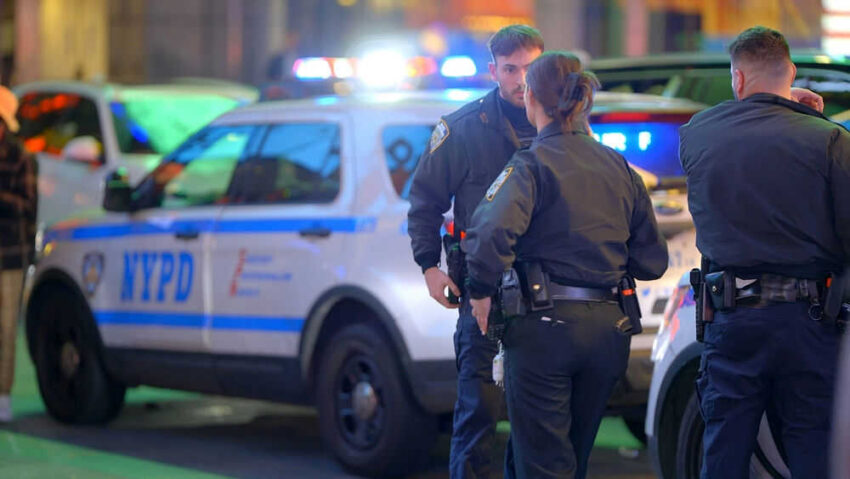(LibertySociety.com) – Five lives lost and dozens injured on a New York tour bus, yet the deadliest factor may have been a simple, ignored seat belt.
Story Snapshot
- Five people killed and dozens injured when a tour bus returning from Niagara Falls overturned on I-90 near Pembroke, NY.
- Most passengers were not wearing seat belts, leading to ejections and increased fatalities.
- Driver distraction and overcorrection cited as probable causes; no impairment or mechanical failure detected.
- The tragedy has reignited debate over passenger safety, emergency response, and regulatory oversight in the tour bus industry.
The Split Second That Changed Everything
On August 22, 2025, a tour bus packed with 54 people, fresh off the marvels of Niagara Falls and bound for the hum of New York City, veered off Interstate 90 near Pembroke, NY. In a matter of seconds, routine turned to chaos. The bus, operated by M&Y Tour Inc., lost control, careened into the median, overcorrected, and rolled, ejecting passengers who hadn’t bothered with seat belts. Five would never arrive home. Dozens more were left with injuries that will linger long after the headlines fade.
First responders, including air ambulances and a phalanx of emergency vehicles, converged on the rural crash site. The carnage prompted a swift and coordinated rescue operation, yet the aftermath was grim. While the driver, Bin Shao, survived and showed no signs of impairment, initial investigations pointed to distraction and overcorrection, a reminder that human error, not machinery, often decides fates on the highway.
The Anatomy of a Catastrophe: What Went Wrong?
Seat belts, a mundane afterthought for many travelers, became the line between survival and ejection. According to law enforcement, most passengers were unbelted, a fact that directly influenced the high casualty count. The bus itself showed no signs of mechanical failure; the road was dry, the weather unremarkable. No other vehicles were involved. The catastrophic toll was inflicted not by complex failure, but by a chain of simple, preventable errors, a distracted moment, a panicked correction, and a collective disregard for basic safety protocol.
Victims hailed from diverse backgrounds, including an international student from Columbia University. Their stories converged for one ill-fated journey, underscoring the randomness, and universality, of tragedy. Emergency rooms across Erie County and beyond worked overtime to treat the injured, while families scrambled for news and authorities set about the somber task of identification and notification.
The Ripple Effect: Industry Reckoning and Public Outcry
Tour bus crashes are not new to America’s highways, but each fresh tragedy reignites long-smoldering debates about safety and regulation. In the aftermath, scrutiny has landed on the tour bus industry’s practices: Do operators emphasize seat belt use? Are drivers adequately screened and trained against distraction and fatigue? Should regulators mandate stricter enforcement and real-time monitoring?
New York State Police and officials, including Governor Kathy Hochul, promised a thorough investigation and support for victims. Columbia University mourned publicly, reminding the nation that such losses ripple through communities, not just families. Meanwhile, transportation experts and lawmakers revisited calls for tighter seat belt enforcement and public education, pointing out that lives hinge on compliance with the simplest of safety measures. The tour bus industry, already under a microscope from previous high-profile accidents, faces renewed pressure to improve accountability and transparency, especially as travel corridors like I-90 remain vital arteries for group tourism.
Next Steps: The Road to Accountability and Reform
The investigation continues, but the broad strokes are already clear. Driver distraction and momentary overcorrection, combined with widespread seat belt neglect, proved fatal. No charges have been filed as of August 24, but legal and regulatory consequences loom. Victims’ families may seek justice and compensation, while M&Y Tour Inc., and the industry at large, must reckon with a public demanding change.
Long-term, this crash may serve as a catalyst for tighter regulations, better enforcement, and a cultural shift among passengers. Will it finally prompt travelers to buckle up on every leg of the journey? As policymakers weigh new mandates, the lesson is stark: in the battle between convenience and caution, the smallest choices can determine who lives and who dies.
Copyright 2025, LibertySociety.com .
Click this link for the original source of this article.
Author: Editor
This content is courtesy of, and owned and copyrighted by, https://libertysociety.com and its author. This content is made available by use of the public RSS feed offered by the host site and is used for educational purposes only. If you are the author or represent the host site and would like this content removed now and in the future, please contact USSANews.com using the email address in the Contact page found in the website menu.





